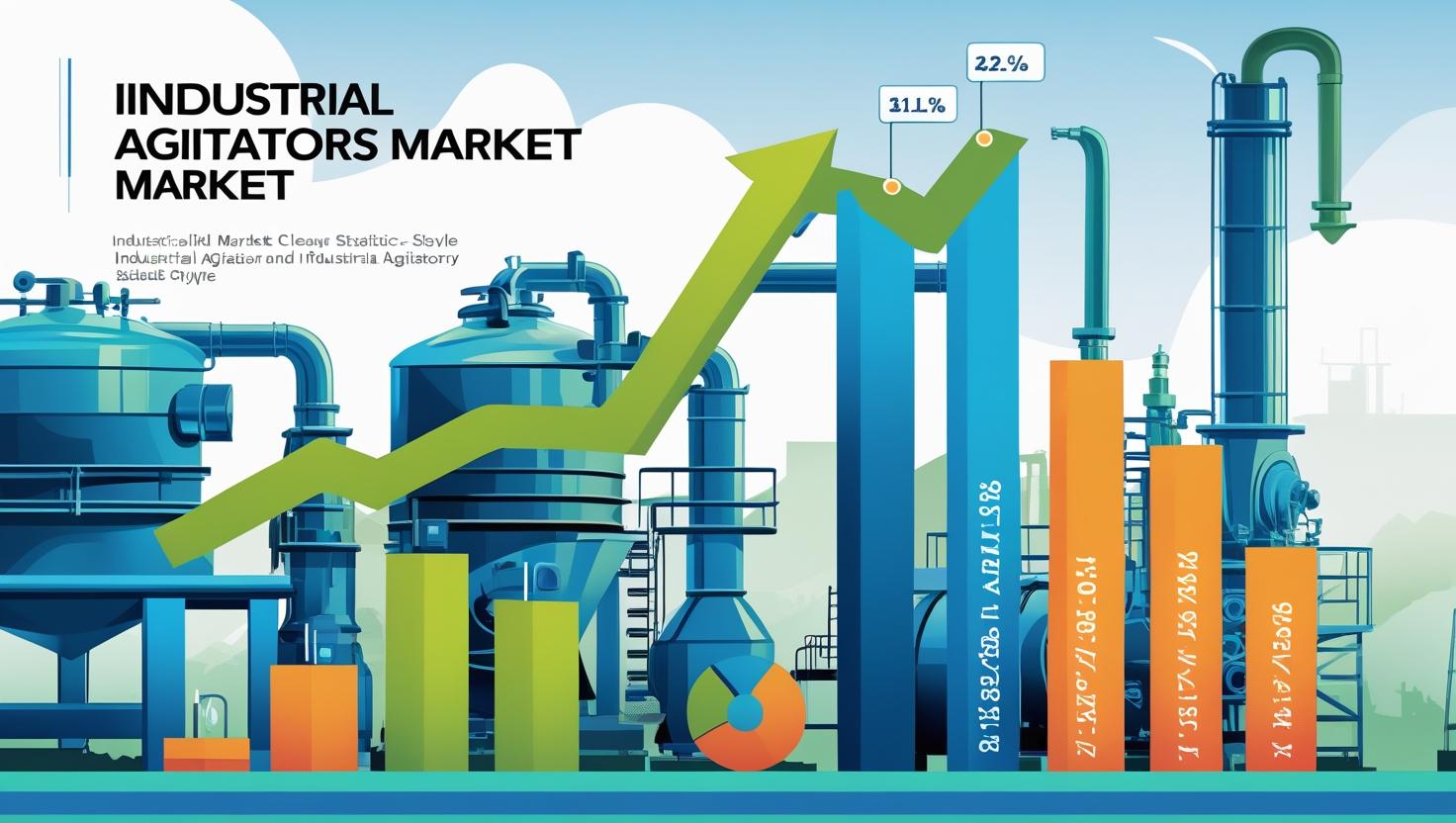The industrial agitators market has emerged as a critical component in the evolution of modern manufacturing processes, where precision, consistency, and efficiency play pivotal roles. From pharmaceuticals and chemicals to food & beverages and wastewater treatment, the demand for reliable and high-performance agitation systems is on the rise. As industries embrace advanced production methods and pursue sustainability goals, industrial agitators are undergoing significant transformation, fueled by innovation and automation.
The Role of Industrial Agitators in Modern Industries
Industrial agitators are devices designed to stir or mix liquids, solids, or gases in various industrial processes. Their primary purpose is to promote chemical reactions, ensure uniformity, or achieve homogeneous mixtures. In industries such as chemicals and petrochemicals, agitators play a vital role in blending raw materials and controlling reaction rates. In pharmaceuticals, they ensure the consistency of formulations, which is critical for product safety and efficacy. Similarly, in food processing, agitators maintain the desired texture, taste, and safety of consumable products.
Today’s market increasingly requires agitators that can handle complex formulations, high viscosities, and stringent hygienic standards. Precision and consistency are no longer optional—they’re mandatory in competitive industries.
Key Growth Drivers for the Market
One of the primary drivers for the industrial agitators market is the growing need for precision mixing in industries like pharmaceuticals, cosmetics, and specialty chemicals. The demand for highly specialized formulations necessitates advanced agitator systems that can deliver exacting performance parameters without compromising quality.
Additionally, the global shift toward energy-efficient and sustainable manufacturing practices has prompted industries to adopt agitators that minimize power consumption while maximizing mixing efficiency. Agitators with variable speed drives (VSDs), optimized impeller designs, and intelligent control systems are gaining popularity for their ability to adapt to real-time process requirements.
Automation and smart manufacturing trends further accelerate this growth. The integration of sensors and IoT-enabled technologies into agitator systems allows for predictive maintenance, real-time monitoring, and enhanced process control, reducing downtime and increasing productivity.
Download PDF Brochure @ https://www.marketsandmarkets.com/pdfdownloadNew.asp?id=59649096

Emerging Technologies and Innovations
Technological advancements are reshaping the industrial agitators market. Manufacturers are developing specialized agitators tailored for specific industrial applications, such as magnetic agitators for pharmaceutical clean rooms or side-entry agitators for large storage tanks in petrochemical plants.
The rise of computational fluid dynamics (CFD) simulations has empowered manufacturers to design more efficient impellers and tank geometries, optimizing the fluid dynamics of agitation processes. This technology enables industries to test and refine their processes virtually, saving time and reducing development costs.
Moreover, hygienic and sanitary agitator designs are becoming increasingly essential in industries like food & beverage and biopharmaceuticals, where contamination control is critical. Polished surfaces, clean-in-place (CIP) compatibility, and aseptic designs are now standard features in many high-end industrial agitator systems.
Market Challenges and Future Outlook
Despite the significant growth potential, the industrial agitators market faces challenges such as high upfront investment costs and maintenance complexities. In some industries, the need for highly customized solutions can also prolong procurement cycles and increase capital expenditures.
However, these challenges are countered by strong market demand and favorable regulatory trends that emphasize energy efficiency, sustainability, and product quality. The global push toward green manufacturing and the adoption of circular economy principles further support the long-term growth of the market.
Looking ahead, the industrial agitators market is poised for sustained expansion, driven by innovation, customization, and automation. With global industries prioritizing precision and consistency in their manufacturing processes, agitator manufacturers are well-positioned to provide critical solutions that enable efficiency, safety, and competitive advantage.
As global industries continue to evolve, the role of industrial agitators is becoming increasingly critical in ensuring product quality and operational efficiency. The emphasis on precision, consistency, and sustainability is pushing the boundaries of agitator technology, making them indispensable in sectors ranging from chemicals to pharmaceuticals and food production. With technological advancements and industry-specific innovations paving the way, the industrial agitators market is set to witness robust growth in the coming years.
Frequently Asked Questions (FAQ) – Industrial Agitators Market
1. What is an industrial agitator?
An industrial agitator is a mechanical device used to mix, blend, or stir liquids, solids, or gases in industrial processes. It ensures uniform distribution of materials and promotes chemical reactions or consistency in mixtures.
2. Which industries commonly use industrial agitators?
Industrial agitators are widely used in industries such as chemicals, pharmaceuticals, food & beverages, cosmetics, wastewater treatment, petrochemicals, and mining.
3. What are the major types of industrial agitators?
The main types of industrial agitators include top-entry, side-entry, bottom-entry, and portable agitators. Each type is suited for specific applications depending on mixing needs and tank design.
4. How is the market for industrial agitators evolving?
The market is witnessing growth due to increasing demand for customized, energy-efficient, and automated agitator systems, particularly in precision-driven industries like pharmaceuticals and specialty chemicals.
5. What role does technology play in modern agitators?
Modern agitators incorporate advanced features such as variable speed drives, IoT-enabled monitoring, real-time process control, and hygienic designs for industries with strict safety standards.
6. What challenges does the industrial agitators market face?
Challenges include high initial costs, complex maintenance requirements for customized systems, and competition from low-cost alternatives in certain regions.
